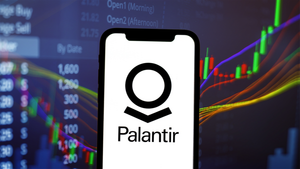
California, a global epicenter of artificial intelligence innovation, has once again positioned itself at the forefront of technological governance with the enactment of a sweeping new AI policy. On September 29, 2025, Governor Gavin Newsom signed into law Senate Bill 53 (SB 53), officially known as the Transparency in Frontier Artificial Intelligence Act (TFAIA). This landmark legislation, set to take effect in various stages from late 2025 into 2026, establishes the nation's first comprehensive framework for transparency, safety, and accountability in the development and deployment of advanced AI models. It marks a pivotal moment in AI regulation, signaling a significant shift towards proactive risk management and consumer protection in a rapidly evolving technological landscape.
The immediate significance of the TFAIA cannot be overstated. By targeting "frontier AI models" and "large frontier developers"—defined by high computational training thresholds (10^26 operations) and substantial annual revenues ($500 million)—California is directly addressing the most powerful and potentially impactful AI systems. The policy mandates unprecedented levels of disclosure, safety protocols, and incident reporting, aiming to balance the state's commitment to fostering innovation with an urgent need to mitigate the catastrophic risks associated with cutting-edge AI. This move is poised to set a national precedent, potentially influencing federal AI legislation and serving as a blueprint for other states and international regulatory bodies grappling with the complexities of AI governance.
Unpacking the Technical Core of California's AI Regulation
The TFAIA introduces a robust set of technical and operational mandates designed to instill greater responsibility within the AI development community. At its heart, the policy requires developers of frontier AI models to publicly disclose a comprehensive safety framework. This framework must detail how the model's capacity to pose "catastrophic risks"—broadly defined to include mass casualties, significant financial damages, or involvement in developing weapons or cyberattacks—will be assessed and mitigated. Large frontier developers are further obligated to review and publish updates to these frameworks annually, ensuring ongoing vigilance and adaptation to evolving risks.
Beyond proactive safety measures, the policy mandates detailed transparency reports outlining a model's intended uses and restrictions. For large frontier developers, these reports must also summarize their assessments of catastrophic risks. A critical component is the establishment of a mandatory safety incident reporting system, requiring developers and the public to report "critical safety incidents" to the California Office of Emergency Services (OES). These incidents encompass unauthorized access to model weights leading to harm, materialization of catastrophic risks, or loss of model control resulting in injury or death. Reporting timelines are stringent: 15 days for most incidents, and a mere 24 hours if there's an imminent risk of death or serious physical injury. This proactive reporting mechanism is a significant departure from previous, more reactive regulatory approaches, emphasizing early detection and mitigation of potential harms.
The TFAIA also strengthens whistleblower protections, shielding employees who report violations or catastrophic risks to authorities. This provision is crucial for internal accountability, empowering those with firsthand knowledge to raise concerns without fear of retaliation. Furthermore, the policy promotes public infrastructure through the "CalCompute" initiative, aiming to establish a public computing cluster to support safe and ethical AI research. This initiative seeks to democratize access to high-performance computing, potentially fostering a more diverse and responsible AI ecosystem. Penalties for non-compliance are substantial, with civil penalties of up to $1 million per violation enforceable by the California Attorney General, underscoring the state's serious commitment to enforcement.
Complementing SB 53 are several other key pieces of legislation. Assembly Bill 2013 (AB 2013), effective January 1, 2026, mandates transparency in AI training data. Senate Bill 942 (SB 942), also effective January 1, 2026, requires generative AI systems with over a million monthly visitors to offer free AI detection tools and disclose AI-generated media. The California Privacy Protection Agency and Civil Rights Council have also issued regulations concerning automated decision-making technology, requiring businesses to inform workers of AI use in employment decisions, conduct risk assessments, and offer opt-out options. These interconnected policies collectively form a comprehensive regulatory net, differing significantly from the previously lighter-touch or absent state-level regulations by imposing explicit, enforceable standards across the AI lifecycle.
Reshaping the AI Corporate Landscape
California's new AI policy is poised to profoundly impact AI companies, from burgeoning startups to established tech giants. Companies that have already invested heavily in robust safety protocols, ethical AI development, and transparent practices, such as some divisions within Google (NASDAQ: GOOGL) or Microsoft (NASDAQ: MSFT) that have been publicly discussing AI ethics, might find themselves better positioned to adapt to the new requirements. These early movers could gain a competitive advantage by demonstrating compliance and building trust with regulators and consumers. Conversely, companies that have prioritized rapid deployment over comprehensive safety frameworks will face significant challenges and increased compliance costs.
The competitive implications for major AI labs like OpenAI, Anthropic, and potentially Meta (NASDAQ: META) are substantial. These entities, often at the forefront of developing frontier AI models, will need to re-evaluate their development pipelines, invest heavily in risk assessment and mitigation, and allocate resources to meet stringent reporting requirements. The cost of compliance, while potentially burdensome, could also act as a barrier to entry for smaller startups, inadvertently consolidating power among well-funded players who can afford the necessary legal and technical overheads. However, the CalCompute initiative offers a potential counter-balance, providing public infrastructure that could enable smaller research groups and startups to develop AI safely and ethically without prohibitive computational costs.
Potential disruption to existing products and services is a real concern. AI models currently in development or already deployed that do not meet the new safety and transparency standards may require significant retrofitting or even withdrawal from the market in California. This could lead to delays in product launches, increased development costs, and a strategic re-prioritization of safety features. Market positioning will increasingly hinge on a company's ability to demonstrate responsible AI practices. Those that can seamlessly integrate these new standards into their operations, not just as a compliance burden but as a core tenet of their product development, will likely gain a strategic advantage in terms of public perception, regulatory approval, and potentially, market share. The "California effect," where state regulations become de facto national or even international standards due to the state's economic power, could mean these compliance efforts extend far beyond California's borders.
Broader Implications for the AI Ecosystem
California's TFAIA and related policies represent a watershed moment in the broader AI landscape, signaling a global trend towards more stringent regulation of advanced artificial intelligence. This legislative package fits squarely within a growing international movement, seen in the European Union's AI Act and discussions in other nations, to establish guardrails for AI development. It underscores a collective recognition that the unfettered advancement of AI, particularly frontier models, carries inherent risks that necessitate governmental oversight. California's move solidifies its role as a leader in technological governance, potentially influencing federal discussions in the United States and serving as a case study for other jurisdictions.
The impacts of this policy are far-reaching. By mandating transparency and safety frameworks, the state aims to foster greater public trust in AI technologies. This could lead to wider adoption and acceptance of AI, as consumers and businesses gain confidence that these systems are being developed responsibly. However, potential concerns include the burden on smaller startups, who might struggle with the compliance costs and complexities, potentially stifling innovation from emerging players. The precise definition and measurement of "catastrophic risks" will also be a critical area of scrutiny and potential contention, requiring continuous refinement as AI capabilities evolve.
This regulatory milestone can be compared to previous breakthroughs in other high-risk industries, such as pharmaceuticals or aviation, where robust safety standards became essential for public protection and sustained innovation. Just as these industries learned to innovate within regulatory frameworks, the AI sector will now be challenged to do the same. The policy acknowledges the unique challenges of AI, focusing on proactive measures like incident reporting and whistleblower protections, rather than solely relying on post-facto liability. This emphasis on preventing harm before it occurs marks a significant evolution in regulatory thinking for emerging technologies. The shift from a "move fast and break things" mentality to a "move fast and build safely" ethos will define the next era of AI development.
The Road Ahead: Future Developments in AI Governance
Looking ahead, the immediate future will see AI companies scrambling to implement the necessary changes to comply with the TFAIA and associated regulations, which begin taking effect in late 2025 and early 2026. This period will involve significant investment in internal auditing, risk assessment tools, and the development of public-facing transparency reports and safety frameworks. We can expect a wave of new compliance-focused software and consulting services to emerge, catering to the specific needs of AI developers navigating this new regulatory environment.
In the long term, the implications are even more profound. The establishment of CalCompute could foster a new generation of safer, more ethically developed AI applications, as researchers and startups gain access to resources designed with public good in mind. We might see an acceleration in the development of "explainable AI" (XAI) and "auditable AI" technologies, as companies seek to demonstrate compliance and transparency. Potential applications and use cases on the horizon include more robust AI in critical infrastructure, healthcare, and autonomous systems, where safety and accountability are paramount. The policy could also spur further research into AI safety and alignment, as the industry responds to legislative mandates.
However, significant challenges remain. Defining and consistently measuring "catastrophic risk" will be an ongoing endeavor, requiring collaboration between regulators, AI experts, and ethicists. The enforcement mechanisms of the TFAIA will be tested, and their effectiveness will largely depend on the resources and expertise of the California Attorney General's office and OES. Experts predict that California's bold move will likely spur other states to consider similar legislation, and it will undoubtedly exert pressure on the U.S. federal government to develop a cohesive national AI strategy. The harmonization of state, federal, and international AI regulations will be a critical challenge that needs to be addressed to prevent a patchwork of conflicting rules that could hinder global innovation.
A New Era of Accountable AI
California's Transparency in Frontier Artificial Intelligence Act marks a definitive turning point in the history of AI. The key takeaway is clear: the era of unchecked AI development is drawing to a close, at least in the world's fifth-largest economy. This legislation signals a mature approach to a transformative technology, acknowledging its immense potential while proactively addressing its inherent risks. By mandating transparency, establishing clear safety standards, and empowering whistleblowers, California is setting a new benchmark for responsible AI governance.
The significance of this development in AI history cannot be overstated. It represents one of the most comprehensive attempts by a major jurisdiction to regulate advanced AI, moving beyond aspirational guidelines to enforceable law. It solidifies the notion that AI, like other powerful technologies, must operate within a framework of public accountability and safety. The long-term impact will likely be a more trustworthy and resilient AI ecosystem, where innovation is tempered by a commitment to societal well-being.
In the coming weeks and months, all eyes will be on California. We will be watching for the initial industry responses, the first steps towards compliance, and how the state begins to implement and enforce these ambitious new regulations. The definitions and interpretations of key terms, the effectiveness of the reporting mechanisms, and the broader impact on AI investment and development will all be crucial indicators of this policy's success and its potential to shape the future of artificial intelligence globally. This is not just a regulatory update; it is the dawn of a new era for AI, one where responsibility is as integral as innovation.
This content is intended for informational purposes only and represents analysis of current AI developments.
TokenRing AI delivers enterprise-grade solutions for multi-agent AI workflow orchestration, AI-powered development tools, and seamless remote collaboration platforms.
For more information, visit https://www.tokenring.ai/.





